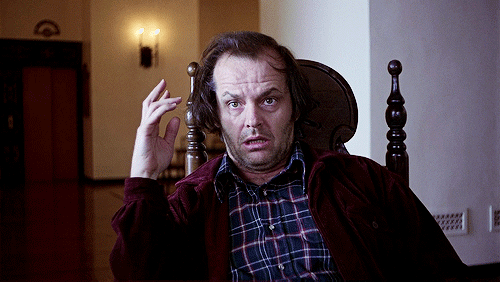So … I MIGHT be reading too much into this. It’s a tale as old as time.
But part of me really wants to think Ryan Murphy has been keeping copies of Rabelais and His World under his pillow because Freakshow has Mikhail Bakhtin written all over it. There are several reasons for this, most notably, though, the carnival setting. Let’s just do a quick crash course in Bakhtin to see if I really am getting in over my head.
Bakhtin first investigated the carnival and the carnivalesque in his essay Rabelais and His World – which was so controversial for the time (post-WWII) it cost him his doctorate – and focused exclusively conventional language. More specifically, Bakhtin was interested in socially acceptable language, and language deemed socially unacceptable. In his analysis he discovered the carnival was a community event where social hierarchies were demolished, and citizens of all ranks existed on the same plane. Peasants could dress up like clergymen without repercussion and commoners could make jokes at the expense of the upper class without reprimand, all while standing alongside those they sought to mock. The carnival was capable of dismantling the social boundaries preventing citizens from participating in a true dialogue with other citizens regardless of social stratum. And dialogue was the ultimate focal point of Bakhtin’s philosophy.
For Bakhtin, dialogue was not engaging in a simple conversation (because for Bakhtin, not even words can be neutral), but was the opposite of monologic communication. Monologic communication is where language is thought to exist in a vacuum, and completely closed off from opposition. In a Foucauldian vein, too, monologic communication was a vehicle for keeping the upper class in power. Essentially, there was a right way to communicate – words, syntax, phrases, fashion, jargon, and behavior all indicated what social sphere one belonged to. But the carnival, or carnivalesque, not only subverts the social convention, but creates a space where high- and low-brow culture can exist together – it creates a dialogue.
Dialogic communication, in contrast to monologic, is not static but continuous. Bakhtin uses the novel as a case study to prove his point. The novel is a collection of voices informed by the voices that came before it and will influence the voices after it. Shit can get really complicated and really meta really fast in this schemata: The novel’s “voices” are not just the voices of the characters, but the voices influencing the characters based on that character’s biography, the voices the characters encounter throughout the novel, and the voices the characters are based on; they are the voices of the author and the voices influencing the author; they are also the voices of the audience influencing how the text is read, and the voices that have influenced the audience. For Bakhtin, there is a no singular voice, no wholly complete self because every utterance is a compilation of agreeable and dissenting voices.
The idea of centripetal and centrifugal voices brings us back to the carnival’s function in facilitating dialogic interaction. The upper class and commoners are equal, despite both groups representing inherently incompatible perspectives. Bakhtin’s dialogic philosophy came as a reaction against dialectical philosophies; in simplified terms, Bakhtin advocates a both/and perspective, rather than an either/or.
So what does all of this have to do with Freakshow? The most obvious approach is because it takes place at a carnival. Murphy has the opportunity to integrate and explore carnivalesque elements such as its participatory nature where boundaries between audience and performer are blurred, its ambivalence to positive and negative principles, and celebrating the materially grotesque body while degrading the ideal. Essentially, the carnival commemorates and observes the paradoxical.
Despite knowing little about Freakshow, we do know its a period piece – taking place in 1950s Florida. Asylum is undoubtedly the best entry thus far in the series, and part of that success derives from how well Murphy captured the socio-political attitudes of the 1960s. Some might think the 1950s is just another excuse to integrate a fantastic wardrobe, but knowing what we do about Bahktin’s carnival, the era couldn’t be more appropriate.
The 1950s are probably the most paradoxical decade in American history. It’s characterized by extreme peace and debilitating fear; The United States was experiencing supreme prosperity through the introduction of mass consumerism and suburban lifestyles, but simultaneously facing extraordinary unease through the seemingly never-ending threat of nuclear war and a communist infestation. The rebellious attitudes personified by James Dean and Marlon Brando were alongside the rise of extreme religious figures like Vincent Peale and Billy Graham. Even critiques of the time period are seemingly incongruous – some view the 1950s with extreme contempt for its blandness and materialism, while some undoubtedly view it as utopian and consistently refer to it as the golden age.
The combination of the time period with Bahktin’s carnival has the potential to make for one of the most enthralling entries into the American Horror Story canon. Murphy has always been a fan of subversiveness, typically playing with motifs such as femininity (I’m DYING to know if Lolita is going to get a shout-out), fertility, religion, science, and social institutions. If anyone can do the carnival justice, Ryan Murphy’s American Horror Story is the best candidate.



2 thoughts on “American Horror Story: Freakshow – Preliminaries”